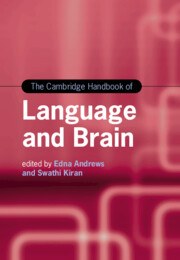Refine listing
Actions for selected content:
1295365 results in Books
5 - Space and Status
-
- Book:
- Anchoring an Empire
- Published online:
- 21 November 2025
- Print publication:
- 27 November 2025, pp 143-167
-
- Chapter
- Export citation
Introduction
-
- Book:
- An Islamic Legal Philosophy
- Published online:
- 19 November 2025
- Print publication:
- 27 November 2025, pp 1-25
-
- Chapter
- Export citation
Conclusions
-
- Book:
- Anchoring an Empire
- Published online:
- 21 November 2025
- Print publication:
- 27 November 2025, pp 203-206
-
- Chapter
- Export citation
Select Bibliography
-
- Book:
- Anchoring an Empire
- Published online:
- 21 November 2025
- Print publication:
- 27 November 2025, pp 207-218
-
- Chapter
- Export citation
Acknowledgments
-
- Book:
- An Islamic Legal Philosophy
- Published online:
- 19 November 2025
- Print publication:
- 27 November 2025, pp xi-xiv
-
- Chapter
- Export citation

Modelling the Divine
- Coming soon
-
- Expected online publication date:
- November 2025
- Print publication:
- 31 December 2025
-
- Element
- Export citation
Conclusion
-
- Book:
- An Islamic Legal Philosophy
- Published online:
- 19 November 2025
- Print publication:
- 27 November 2025, pp 240-256
-
- Chapter
- Export citation
1 - Introduction
-
- Book:
- Friends of God and Slaves of Men
- Published online:
- 11 November 2025
- Print publication:
- 27 November 2025, pp 1-8
-
- Chapter
- Export citation
1 - The Revival of Shāfiʿism and Intellectual Life in Damascus
-
- Book:
- An Islamic Legal Philosophy
- Published online:
- 19 November 2025
- Print publication:
- 27 November 2025, pp 26-75
-
- Chapter
- Export citation
Dedication
-
- Book:
- Friends of God and Slaves of Men
- Published online:
- 11 November 2025
- Print publication:
- 27 November 2025, pp v-vi
-
- Chapter
- Export citation
Reviews
-
- Book:
- Anchoring an Empire
- Published online:
- 21 November 2025
- Print publication:
- 27 November 2025, pp ii-ii
-
- Chapter
- Export citation

The Cambridge Handbook of Language and Brain
- Coming soon
-
- Expected online publication date:
- November 2025
- Print publication:
- 09 October 2025
-
- Book
- Export citation
8 - Religion’s Role in Freeing Slaves Today
- from Part II - Religion and Contemporary Slavery
-
- Book:
- Friends of God and Slaves of Men
- Published online:
- 11 November 2025
- Print publication:
- 27 November 2025, pp 195-220
-
- Chapter
- Export citation
6 - Immaculate Conceptions
-
- Book:
- Anchoring an Empire
- Published online:
- 21 November 2025
- Print publication:
- 27 November 2025, pp 168-202
-
- Chapter
- Export citation
Acknowledgments
-
- Book:
- Anchoring an Empire
- Published online:
- 21 November 2025
- Print publication:
- 27 November 2025, pp xiii-xiv
-
- Chapter
- Export citation
Part I - Religious Responses To Slavery – Historical Patterns
-
- Book:
- Friends of God and Slaves of Men
- Published online:
- 11 November 2025
- Print publication:
- 27 November 2025, pp 9-144
-
- Chapter
- Export citation
2 - Ibn ʿAbd al-Salām’s Scholarly Formation and the Politics of Patronage in Ayyubid Damascus
-
- Book:
- An Islamic Legal Philosophy
- Published online:
- 19 November 2025
- Print publication:
- 27 November 2025, pp 76-102
-
- Chapter
- Export citation
2 - Elusive Returns
-
- Book:
- Anchoring an Empire
- Published online:
- 21 November 2025
- Print publication:
- 27 November 2025, pp 40-70
-
- Chapter
- Export citation
Introduction
-
- Book:
- Anchoring an Empire
- Published online:
- 21 November 2025
- Print publication:
- 27 November 2025, pp 1-10
-
- Chapter
- Export citation
1 - “The Secrets of the Land”
-
- Book:
- Anchoring an Empire
- Published online:
- 21 November 2025
- Print publication:
- 27 November 2025, pp 11-39
-
- Chapter
- Export citation
